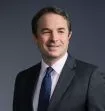The hearing before the U.S. Court of Appeals for the D.C. Circuit in PHH Corp. v. Consumer Financial Protection Bureau on April 12 was a tale of two arguments.
The presentation on behalf of PHH was relatively uneventful: its counsel (Ted Olson) was asked a limited number of questions in roughly 25 minutes at the podium, with at least five minutes passing before the first question was posed. In contrast, counsel for the CFPB (Larry Demille-Wagman) was kept at the podium for a solid 40 minutes and subjected to a steady stream of tough questions.
While it is hard to predict based on the oral argument how the Court of Appeals will rule, including whether the Court will reach the constitutional questions it previously raised, today's argument suggests that the CFPB may well be on track for its first major litigation defeat.
The oral argument encompassed four issues presented in PHH's petition for review of the CFPB's administrative decision. The panel of Judges Brett Kavanaugh and A. Raymond Randolph particularly focused on the arguments that the CFPB erred in rejecting a long-standing interpretation of RESPA; and that the structure of the CFPB is unconstitutional. (Judge Karen Henderson also is on the panel but did not participate in the oral argument; she will take part in deciding the case.) In addition, although to a lesser extent, the panel heard argument on the questions whether the CFPB was wrong to conclude that the RESPA statute of limitations does not apply in administrative adjudications; and whether Director Cordray acted unlawfully in imposing $109M in disgorgement (in contrast to the $6M awarded by the administrative law judge).
Here are the highlights:
The CFPB's Interpretation of RESPA
PHH argued that Section 8(c)(2) of RESPA, 12 U.S.C. § 2607(c)(2), specifically authorizes the types of captive mortgage reinsurance agreements targeted in the CFPB's enforcement action, because they are a "payment to any person of a bona fide salary or compensation or other payment for goods or facilities actually furnished or for services actually performed." PHH explained that the CFPB ignored the longstanding interpretation of RESPA to that end that had been issued by the Department of Housing and Urban Development (in a 1997 letter, among other administrative pronouncements), endorsed by the courts, and relied upon by industry. In PHH's view, Director Cordray's decision wrote Section 8(c)(2) out of the statute.
Moreover, PHH contended that the CFPB's interpretation deprived PHH of due process of law by retroactively imposing the CFPB's new legal interpretation in an administrative enforcement action. PHH argued that an individual is entitled to know the conduct that is permitted or prohibited by law and that the CFPB violated that rule through its "180 [degree]" reversal on the meaning of Section 8(c)(2). (Mayer Brown filed an amicus brief on behalf of the U.S. Chamber of Commerce addressing this due process issue.)
The panel appeared skeptical about the CFPB's reading of Section 8(c)(2), with Judge Kavanaugh emphasizing that its protection of "bona fide" transactions applies notwithstanding any other section of the statute. Whether something is "bona fide" is usually determined by fair market value, Judge Kavanaugh observed. The CFPB contended in response that kickbacks inherently distort a market even if there is no clear evidence of increased prices, leading PHH, in rebuttal, to describe the significant benefits of mortgage reinsurance—particularly as demonstrated in 2008. The CFPB also disputed PHH's contention that the rule of lenity should apply in this context, even though violations of RESPA are subject to criminal sanctions. Here again, however, the panel appeared skeptical of the CFPB's position.
The panel likewise appeared to doubt the fairness of the CFPB's decision to jettison the 1997 HUD Letter and other equivalent administrative and judicial interpretations. The entire industry had relied upon the HUD interpretation, Judge Kavanaugh noted, before observing that the CFPB's decision to "pull the plug" was "very problematic." Meanwhile, the CFPB conceded that the reinsurance structure at issue in PHH was a "widespread practice" and acknowledged that it could not point to any prior official interpretation stating it was unlawful.
Nonetheless, the CFPB contended that its actions did not deprive PHH of due process, in part because the HUD letter was not an authoritative interpretation that justified broad reliance. But Judge Kavanaugh appeared skeptical about that proposition, noting that even informal government action could raise due process problems under governing case law. (He explained that a policeman could not tell an individual that it was okay to cross a street and then immediately give the person a ticket upon reaching the other side.)
To this point, PHH added that an agency cannot relieve itself of its obligations to comply with the Due Process Clause by telling regulated entities that they cannot trust previous pronouncements—or, as Judge Kavanaugh put it, an agency cannot say "just kidding." Indeed, PHH highlighted that the CFPB previously had adopted prior regulatory understandings by rule, meaning that the penalty in this case came "out of the blue" for businesses that had worked to comply with the law as it was widely understood.
In all, the panel appeared to sympathize with PHH's explanation of the significance of the case for the industry. The entire financial services sector is listening to this case, PHH noted as it repeatedly expressed its hope that the Court would address the statutory interpretation questions.
Constitutionality of the CFPB
Judge Kavanaugh asked both parties about the constitutionality of the CFPB's structure.
PHH argued that Congress had created the CFPB as a "super-executive agency" that illegally vested unilateral authority in a single Director removable only for cause. PHH also provided context for the "for cause" removal limitation, noting other structural features of the Bureau that enhanced its independence, including its insulation from the congressional appropriations process, its authority to hire and fire staff, and its ability to propose legislation to Congress or issue rules without going through OMB. Looking at this whole picture, PHH argued that the CFPB does not have to pay any attention to the President or Congress. As a result, it requested more than just elimination of the "for cause" provision as a remedy. Because Director Cordray had been appointed to an unconstitutional agency, PHH argued Congress would have to restructure it and a new director appointed.
The CFPB argued in response that the Constitution permits independent agencies to have a variety of different structures and that, if the Court were to find the CFPB unconstitutional, the appropriate remedy would be to sever the "for cause" limitation on removal of Director Cordray. Willing to accept the implications of its position, the CFPB argued that Congress could let the SEC, FTC, and NLRB be led by one person. The President has "sufficient control" as long as the statute preserves "for cause" removal, the CFPB reasoned.
Judge Kavanaugh appeared skeptical of this defense of the CFPB's structure. While he appeared to agree with the CFPB's observation about the multiplicity of different independent agency structures, he appeared to disagree with the CFPB's conclusion that Congress thus could create a regulatory agency with a single director who is removable only for cause. Commissions are different, Judge Kavanaugh noted, as they provide the protection of bipartisanship or non-partisanship. Multi-member bodies thus are the norm among independent agencies, he observed, with only "very rare exceptions." Indeed, Judge Kavanaugh seemed alarmed at the prospect of Congress deciding that a regulatory agency such as the FCC, SEC, FTC, or NLRB could be led by a single director.
RESPA's Statute of Limitations
The CFPB appeared to fare no better in its argument that the REPSA statute of limitations does not apply in its administrative enforcement actions. Judge Randolph asked, for example, why, even if the statute were silent, the Court should not borrow a statute of limitations from another state or federal statute, as it has done in other contexts. And Judge Kavanaugh appeared concerned at the prospect that the CFPB's theory would allow a future director to impose liability for decades-old conduct.
The CFPB suggested that a court might impose a statute of limitations when it would be an "abomination" not to have one, but the panel appeared unconvinced. Thus, Judge Randolph asked why the various reasons for having a statute of limitations – e.g. difficulty obtaining evidence, loss of memory – did not argue equally for the imposition of a statute of limitations in this context. The CFPB conceded that those reasons did apply equally, but contended nonetheless that Congress chose not to impose a statute of limitations in this context. But the CFPB also conceded, under questioning by Judge Kavanaugh, that it knew of no legislative history justifying the omission of a statute of limitations for administrative adjudications.
Director Cordray's Decision to Raise the Disgorgement Remedy to $109M
Director Cordray's decision to raise the disgorgement remedy from $6M to $109M received the least attention of the four topics addressed at oral argument. The parties disputed whether the Director could treat every payment of a premium as a new offense. PHH described the theory as leading to a draconian and unauthorized punishment. The CFPB argued in response that the remedy was "totally appropriate."
* * * * *
Predicting the outcome of a case based on the oral argument is always dangerous, but the CFPB faced unusually tough questioning at this argument. The Court is likely to consider the case for several months, at least, before issuing its ruling.
Originally published on April 13, 2016
Visit us at mayerbrown.com
Mayer Brown is a global legal services provider comprising legal practices that are separate entities (the "Mayer Brown Practices"). The Mayer Brown Practices are: Mayer Brown LLP and Mayer Brown Europe – Brussels LLP, both limited liability partnerships established in Illinois USA; Mayer Brown International LLP, a limited liability partnership incorporated in England and Wales (authorized and regulated by the Solicitors Regulation Authority and registered in England and Wales number OC 303359); Mayer Brown, a SELAS established in France; Mayer Brown JSM, a Hong Kong partnership and its associated entities in Asia; and Tauil & Chequer Advogados, a Brazilian law partnership with which Mayer Brown is associated. "Mayer Brown" and the Mayer Brown logo are the trademarks of the Mayer Brown Practices in their respective jurisdictions.
© Copyright 2016. The Mayer Brown Practices. All rights reserved.
This Mayer Brown article provides information and comments on legal issues and developments of interest. The foregoing is not a comprehensive treatment of the subject matter covered and is not intended to provide legal advice. Readers should seek specific legal advice before taking any action with respect to the matters discussed herein.




